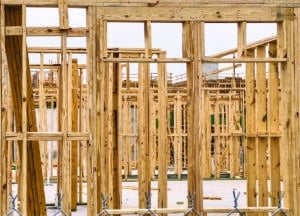A prominent researcher who spent a year combing through archived municipal planning documents, state reports and local media accounts of land-use debates in Greater Boston says it’s clear many suburban areas have used zoning as a tool to exclude for over 100 years.
“Greater Boston suburbs have such a great reputation for being progressive and celebrating diversity. I think it’s real, but it’s complicated and there are issues there for us all to face,” Amy Dain said.
Dain’s report, “Exclusionary By Design,” was funded by The Boston Foundation‘s Boston Indicators project and published Wednesday.
Today’s widespread zoning barriers to multifamily development were largely put in place during a rapid period of change in the 1960s and 1970s, Dain wrote, when even suburbs like Arlington that had previously welcomed apartment developments as a way to boost their tax base rewrote local laws to ban them in a fast-moving wave Dain dubbed “The Big Downzone.” Today, most apartments and mixed-use developments in Greater Boston’s suburbs are built under a zoning variance or a special permit process – with sometimes both needed for the same project.
While race-based zoning has long been illegal in Massachusetts and federal laws passed around the time of this period of rapid downzoning added further legal sanctions, Dain’s report contends that enough evidence exists to prove local officials and voters had racial segregation in mind as part of twin broader goals: retain and recruit wealthy residents and erect barriers to working-class and poorer families moving there.
“No zoning in Massachusetts has ever been explicitly racial,” Dain wrote. “Zoning segregates indirectly by preventing new construction of diverse types of housing across whole jurisdictions, and limiting total buildout of housing in
jurisdictions, so that prices of scarce housing get bid up in the most exclusive communities, making them inaccessible to lower-income, lower-wealth households.”
These efforts built on the growth of zoning restrictions against apartment buildings immediately after World War II, Dain found, and in elements of prewar suburban zoning codes that made goals of religious and ethnic segregation. Before zoning was blessed by the U.S. Supreme Court in the 1920s, many suburban property owners had tried to enforce racial and other types of segregation via time-limited deed restrictions that limited what could be done with a property by the person who bought it.
“I think what really struck me about the school busing era was that the racism that comes in the form of people shouting obscenities and demonstrating in the streets is easy to see. But the racism that’s embedded in zoning codes doesn’t shout obscenities. It’s difficult to understand,” Dain said in an interview, adding that media coverage and political debates at the time were full of language that showed most Bay Staters understood racial segregation to be a result of suburbs’ restrictive zoning.
At the same time, Dain found, numerous suburbanites also fought against what they saw as explicitly segregationist zoning proposals and laws.
“We see in 1968, 1970 there were all these committees formed to open up zoning. We don’t have a monoculture of politics around this. These zoning debates went into the night,” she said. “That’s part of the story I wanted to tell. There have been people pushing to allow more diverse housing all along, but they’ve been up against tough odds.”
Since “The Big Downzone,” Dain said, suburban planning officials and housing advocates have pushed back against this wall of exclusion, but met with limited success. Officials and voters have espoused ideals of integration but then implemented zoning and other land-use policies that made it hard to build less expensive homes, Dain said, and even sympathetic voters have decided against upzoning efforts worried that, as residents of Framingham experienced, a single community liberalizing its zoning suddenly becomes the region’s multifamily developers’ main focal point.
“If one municipality were to change their zoning for the regional good, it wouldn’t be enough to solve for the regional problem and it might actually put the community at a disadvantage,” Dain said. “We’ve seen decades and decades of advocacy – really strong advocacy – to open up communities to less restrictive zoning. That advocacy has led to really great housing developments throughout the region, but it hasn’t made a systemic difference.”






